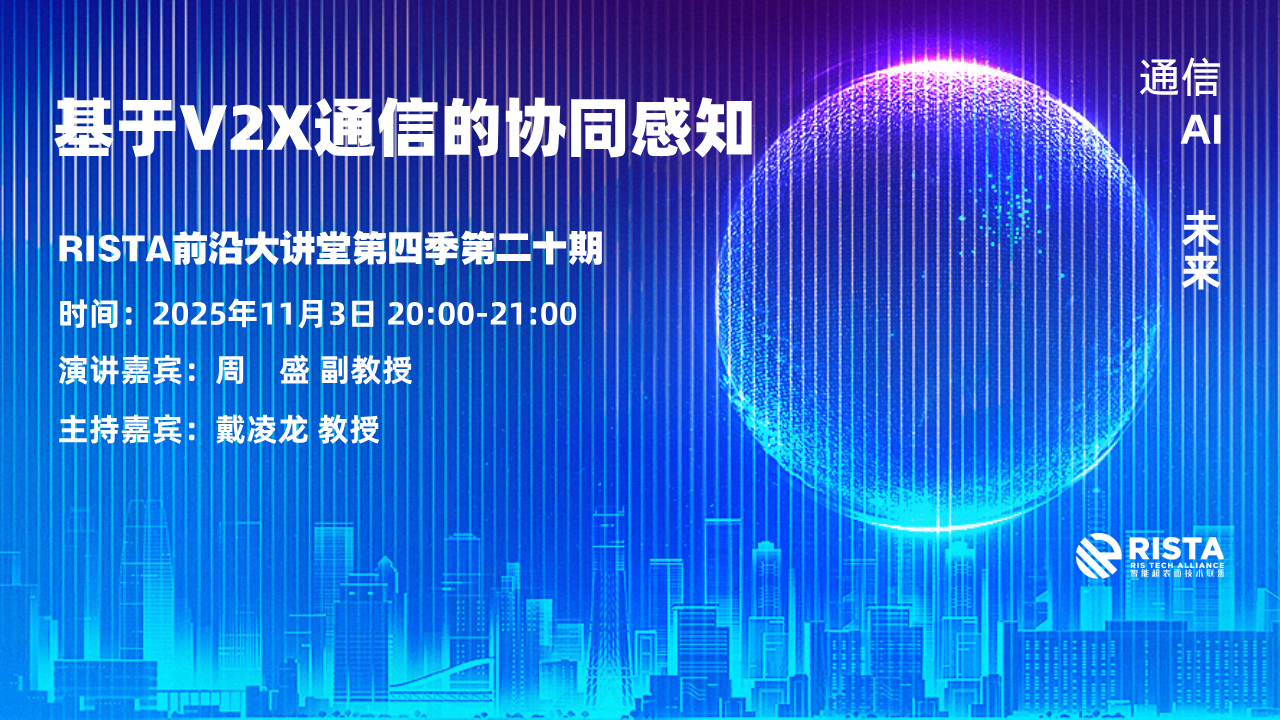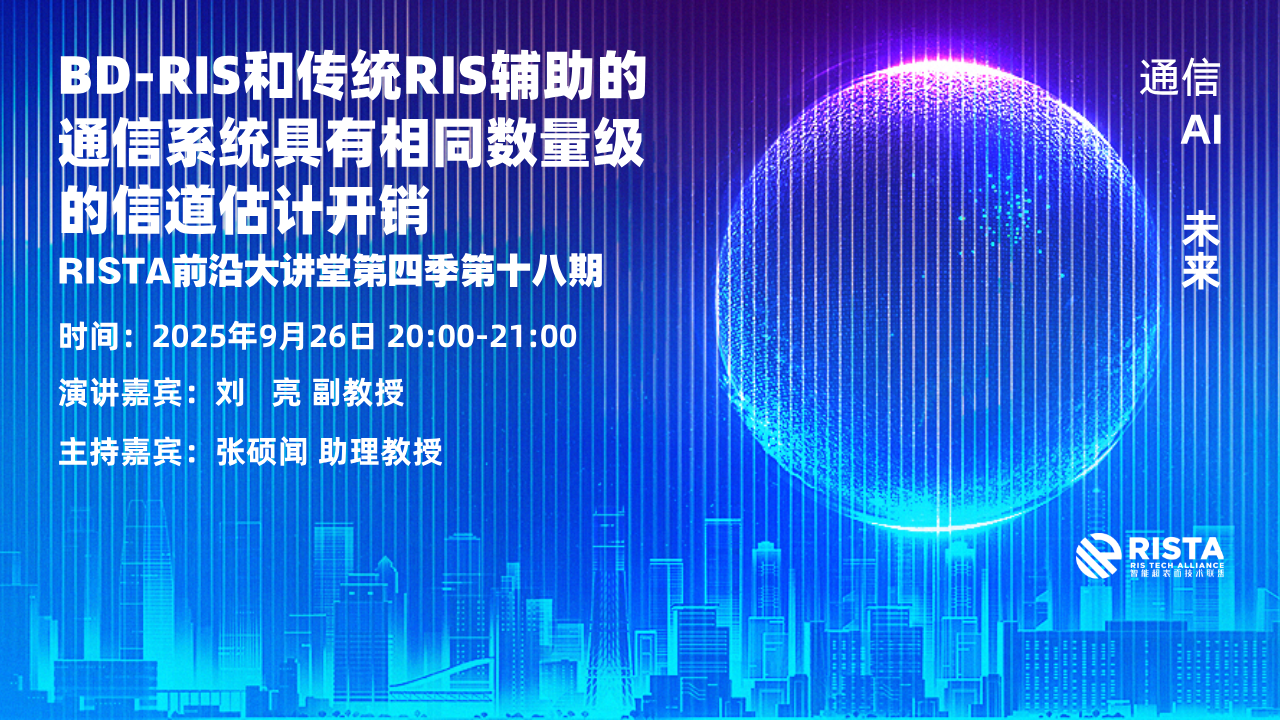2024年11月9日,由智能超表面技术联盟(RISTA)主办的第三届智能超表面技术论坛在西安召开。本次论坛以“新视界·RIS赋能6G”为主题,包括两院院士在内的400多位国内外专家齐聚会场,共同探讨面向6G时代智能超表面技术现状和产业发展趋势。
-
Arman Shojaeifard,ETSI ISG RIS, Chair.
-
Ertugrul Basar,IEEE ETI-RIS, Chair.
-
Marco Di Renzo,Paris-Saclay University, CNRS Research Director (Professor), Head of Group.
-
Dinh-Thuy Phan Huy, Referent of Orange Expertise/Networks of the Future, PhD, Orange Fellow.
-
Emil Björnson,IEEE Fellow, Professor at KTH
| 武庆庆 副教授 |
|
|
报告嘉宾
|
Prof.Ertugrul Basar |
IEEE ETI-RIS, Chair. Koç University,Professor |
|
Biography: Prof. Ertugrul Basar received his Ph.D. degree from Istanbul Technical University in 2013. He is a Full Professor at the Department of Electrical and Electronics Engineering, Koç University, Istanbul, Turkey, and the Department Chair. He is the founding director of the Communications Research and Innovation Laboratory (CoreLab). He had visiting positions at Ruhr University Bochum, Germany (2022, Mercator Fellow) and Princeton University, USA (2011-2012, Visiting Research Collaborator). His primary research interests include 6G and beyond wireless networks, communication theory and systems, reconfigurable intelligent surfaces, software-defined radio implementations, waveform design, physical layer security, and deep learning and signal processing for communications. He is the author/co-author of around 180 international journal publications and 16 patents that received more than 15,000 citations. He also supervised 5 PhD and 18 master’s students. He is an Associate Member of the Turkish Academy of Sciences (TÜBA). In recognition of his outstanding contributions to physical-layer design for next-generation wireless networks, Prof. Basar was elevated to IEEE Fellow in 2023, becoming one of the youngest IEEE Fellows of Turkey at the age of 37. He is also a Fellow of theAsia-Pacific Artificial Intelligence Association (AAIA) and the Artificial Intelligence Industry Academy (AIIA). Recently, Dr. Basar has been selected as an IEEE ComSoc Distinguished Lecturer for the Class of 2024-2025. |
|
|
Speech Topic: Recent Advances in the Practical Implementation of Reconfigurable Intelligent Surfaces |
|
|
Abstract: This short talk will mainly summarize our recent efforts in practically implementing reconfigurable intelligent surfaces (RISs) at different bands and environments. We will particularly show the promising potential of the RIS technology in improving the signal quality and even the secrecy of mobile users, along with our new practical results on RIS identification. A quick overview of our recent theoretical research efforts in this domain will also be presented. |
|
|
Dr.Dinh-Thuy Phan Huy |
Orange Fellow,Referent of Orange Expertise/Networks of the Future |
|
Biography: Dr. Dinh-Thuy PHAN HUY is currently the Referent of Orange Expertise/Future Networks community of experts in Orange Innovation/Networks entity. She is also a research project manager on Backscattering technologies for future networks. She received the degree in engineering from Supelec, in 2001, and the Ph.D. degree in electronics and telecommunications from the National Institute of Applied Sciences of Rennes, France, in 2015. In 2001, she joined France Telecom R&D (now Orange Innovation), Châtillon, France. She has contributed to and led several collaborative research projects on 5G. She is co-inventor of more than 40 patents. She is the recipient of the “Prix Irène Joliot Curie 2018 – catégorie Femme-Recherche-Entreprise” from the French Ministry of Education and Research. She is an IEEE senior member. Her research interests include wireless communications and 6G. She is currently involved in Hexa-x EU II project on 6G on Zero-Energy Device. She has been workpackage leader on sustainability and security), in RISE-6G EU project (2021-2023) on reconfigurable intelligent surfaces. She is in the IEEE Emerging Technology Initiative on RIS (as industry liaison officer) and in the ETSI ISG RIS. She is the first Orange Fellow. |
|
|
Speech Topic: Reconfigurable Intelligent Sustainable Environments for 6G Wireless Networks (RISE-6G) Project:lessons learnt on RIS deployment and architecture aspects |
|
|
Abstract: The European RISE-6G project (2021-2023) has studied RIS technology for 6G, from theoretical aspects to deployment and standardisation aspects, thanks to a mixed consortium of Academics, Network Operators, Industrial Verticals and network and RIS equipment manufacturers. In this talk, we expose the lessons learnt on RIS deployment and architecture aspects, from a network operator perspective. |
|
|
Prof.Emil Björnson |
KTH Royal Institute of Technology, Sweden, Full Professor |
|
Biography: Emil Björnson received the M.S. degree in engineering mathematics from Lund University, Sweden, in 2007, and the Ph.D. degree in telecommunications from the KTH Royal Institute of Technology, Sweden, in 2011. From 2012 to 2014, he was a post-doc at the Alcatel-Lucent Chair on Flexible Radio, SUPELEC, France. From 2014 to 2021, he held different professor positions at Linköping University, Sweden. In 2020-2021, he was a part-time Visiting Full Professor at the KTH. From 2022, he is a tenured Full Professor of Wireless Communication at KTH. |
|
|
Speech Topic: What are the Promising Use Cases for RIS in 6G Networks? |
|
|
Abstract: The upper mid-band frequencies (i.e., 7-24 GHz) are regarded as the golden bands for the sixth-generation (6G) wireless communication systems, combining good coverage, much new spectrum, and many antennas in compact form factors. The first 6G networks will most likely use this band. There is much prior work on channel modeling, coexistence, and possible implementation scenarios in these bands. On the other hand, the use of reconfigurable intelligent surfaces (RISs) has not yet been examined in these bands, even if this transformative technology has generally garnered considerable attention in recent years for its ability to enhance spectral efficiency, coverage, and reliability of wireless channels. There are significant frequency-specific challenges related to RIS deployment, use cases, number of required elements, channel estimation, and control. These are previously unaddressed for the upper mid-band. In this paper, we aim to bridge this gap by exploring various use cases, including RIS-assisted fixed wireless access (FWA), enhanced capacity in mobile communications, and increased reliability at the cell edge. We identify the conditions under which RIS can provide major benefits and optimal strategies for deploying RIS to enhance the performance of 6G upper mid-band communication systems. |
|
–End–







